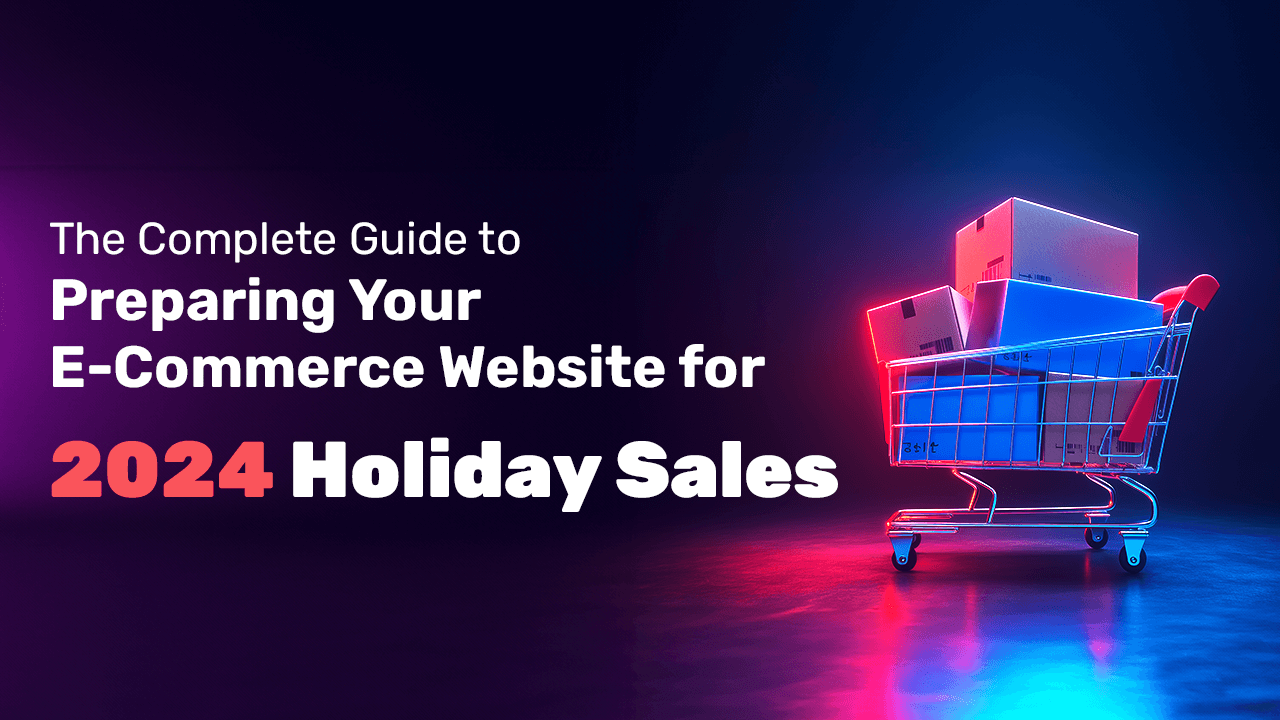The Complete Guide to Preparing Your E-Commerce Website for 2024 Holiday Sales

Tips for Boosting Sales and Enhancing User Experience
Major shopping holidays like Israel’s Shopping IL, Black Friday, and Cyber Monday have become critical events for e-commerce sites. They’re not just one-time sales events but an opportunity to expand your customer base and significantly increase revenue. For example, according to Adobe Digital Insights, Black Friday and Cyber Monday in 2023 generated around $9.12 billion in the U.S. alone, a 23% increase from the previous year.
In Israel, 2023 showed a clear growth trend: there was a 13% increase in online shopping, while physical stores experienced a 3% decline. The average shopping cart for international online purchases grew by 2.6% to ₪196, while local purchases saw a 2.2% rise, with the average cart reaching ₪266.
These statistics highlight the enormous potential of November shopping holidays, and if you own an e-commerce site, you must ensure your website is fully prepared for this period.
Early Preparation: Start Your Campaigns in October
According to the National Retail Federation, about 27% of consumers begin looking for deals as early as October, well before November. Leading brands like Nike and Amazon have realized the importance of early campaigns, offering discounts and deals from the beginning of the month to capture customers looking for great bargains before the rush of big shopping days.
What Can You Learn from Successful Brands?
Nike typically launches early campaigns offering exclusive discounts on new sports collections, attracting early shoppers and preventing them from waiting until the last minute.
Amazon continues to develop its “Prime Early Access” concept, which begins before November and offers Prime members exclusive discounts. This strategy effectively maximizes sales before Singles’ Day on November 11 and the heavy rush of Black Friday.
How Can You Apply This to Your Business?
Early Bird Deals: Offering early bird deals can grab the attention of early shoppers and prevent them from turning to competitors. For example, Zara’s early winter collection discounts attracted customers, leading them to shop early instead of waiting for Black Friday.
Inventory Focus: Having available inventory is critical for the success of early sales. Companies like Best Buy and Walmart invest millions in ensuring stock availability and using smart inventory management systems to respond quickly to demand changes, avoiding customer disappointment due to stock shortages.
Preparing Your Site for Heavy Traffic: Busy traffic periods require careful preparation. For example, Walmart improved its server infrastructure, resulting in a 35% increase in sales during the holiday season. Utilizing advanced technologies to improve load times and prevent crashes during high-traffic periods is essential to ensure a smooth shopping experience and avoid potential sales losses.
Clear Marketing Communication: Early preparation involves creating clear and direct communication with customers. Sending emails and reminders about early deals and unique opportunities can increase awareness and lead to early purchases. Brands like Old Navy use personalized digital marketing campaigns based on shopping habits, encouraging customers to shop early with tailored discounts.
Optimizing for Mobile Shopping Experience
In 2023, online shopping habits shifted significantly, with around 70% of purchases in the U.S. being made on mobile devices (Statista). In Israel, Google data also shows a substantial increase in online shopping through mobile, with the mobile user experience being crucial for e-commerce success. November sales events like Shopping IL, Singles’ Day, Black Friday, and Cyber Monday are peak times when consumers make real-time purchases, often via smartphones — whether from home, at work, or while waiting in line at physical stores.
Why Is Mobile Optimization So Important?
Research from Google shows that every second of delay in loading a mobile page can reduce conversion rates by 20%. Another study shows that 53% of users will leave a website that takes more than three seconds to load. Therefore, a slow shopping experience can lead to customer abandonment and lost sales, especially at critical moments.
Examples:
Sephora improved its mobile experience by optimizing the user interface, resulting in an 18% sales increase during the holidays. The responsive design made it easier for customers to access information and make purchases through mobile devices.
Zara increased time spent on its site by 22% after investing in optimizing the entire shopping process for mobile devices, including the checkout process.
What Should You Do?
Improve Loading Times: Delays in load times are the biggest enemy of mobile e-commerce sites. Improving site performance through image optimization, reducing file sizes, and using a CDN (Content Delivery Network) can significantly improve performance. Businesses using solutions like AMP (Accelerated Mobile Pages) can reduce load times and ensure users stay on the site longer.
Responsive Design: A design that automatically adjusts to all screen types — smartphones, tablets, and computers — is essential. Ensure your site is mobile-friendly with a simple display, large and clear navigation buttons, and a quick, efficient checkout process. According to Google, mobile-optimized sites enjoy 67% higher conversion rates compared to non-mobile-optimized sites.
Streamlined Checkout: Research from Baymard Institute shows that 69% of customers abandon their carts before completing a purchase, with one of the main reasons being a complicated checkout process. Simplify the process with a smooth payment system and minimal checkout steps. Apple Pay and Google Pay offer seamless and intuitive mobile purchasing experiences.
Targeted Notifications: Integrating notifications sent to users after they leave the site or their cart can increase the likelihood of them returning to complete the purchase. Targeted notifications with a special offer or discount can significantly improve return rates. Salesforce data shows that using real-time notifications during the holidays led to a 25% increase in completed purchases.
Personalizing the Shopping Experience
Personalization has become one of the central tools for improving the shopping experience and is a key driver of revenue growth. Today’s customers expect personalized recommendations, and the better a business can tailor the shopping experience to customer needs, the higher the conversion rates. According to McKinsey, effective personalization can lead to an average increase of around 15% in revenue. It’s no surprise that consumers appreciate personalized experiences, whether through product recommendations, special offers, or precise communication based on their purchase history.
Why Is Personalization So Important for Online Stores?
In a world overwhelmed with information and advertising offers, businesses that invest in personalization stand out. Brands like Amazon and Spotify use advanced personalization technologies to analyze browsing data, previous purchases, and even various activities on their platforms to deliver each customer a unique and more effective experience.
Practical Examples:
Amazon is perhaps the most well-known example of successful personalization. Their system analyzes users’ purchase histories and browsing behaviors, offering personalized product recommendations on every product page. This not only increases the likelihood of additional purchases but also encourages customers to discover new products.
Spotify, using personalization based on music preferences and other data, has increased its premium service sales by 35%. The system identifies preferred listening styles and offers songs, playlists, and podcasts tailored specifically to customer preferences.
What Can You Do for Your Business?
Personalized Offers: Analyze your customers’ behavior to offer products that suit them precisely. Using information like browsing history, purchase history, and even previously noted interests can help build a personalized shopping experience that encourages the customer to buy more.
Personalized Emails: Sending personalized emails based on customer behavior generates a 29% higher open rate than general emails (Experian). These emails can include special offers, updates on relevant products, or reminders about products left in the shopping cart.
Personalized Content on Your Website: In addition to emails, businesses can display personalized content directly on the site. For example, the homepage can show products related to the customer’s interests or recommendations based on their purchase history. Brands like Netflix effectively do this, showing movies and series based on the customer’s previous viewing history.







